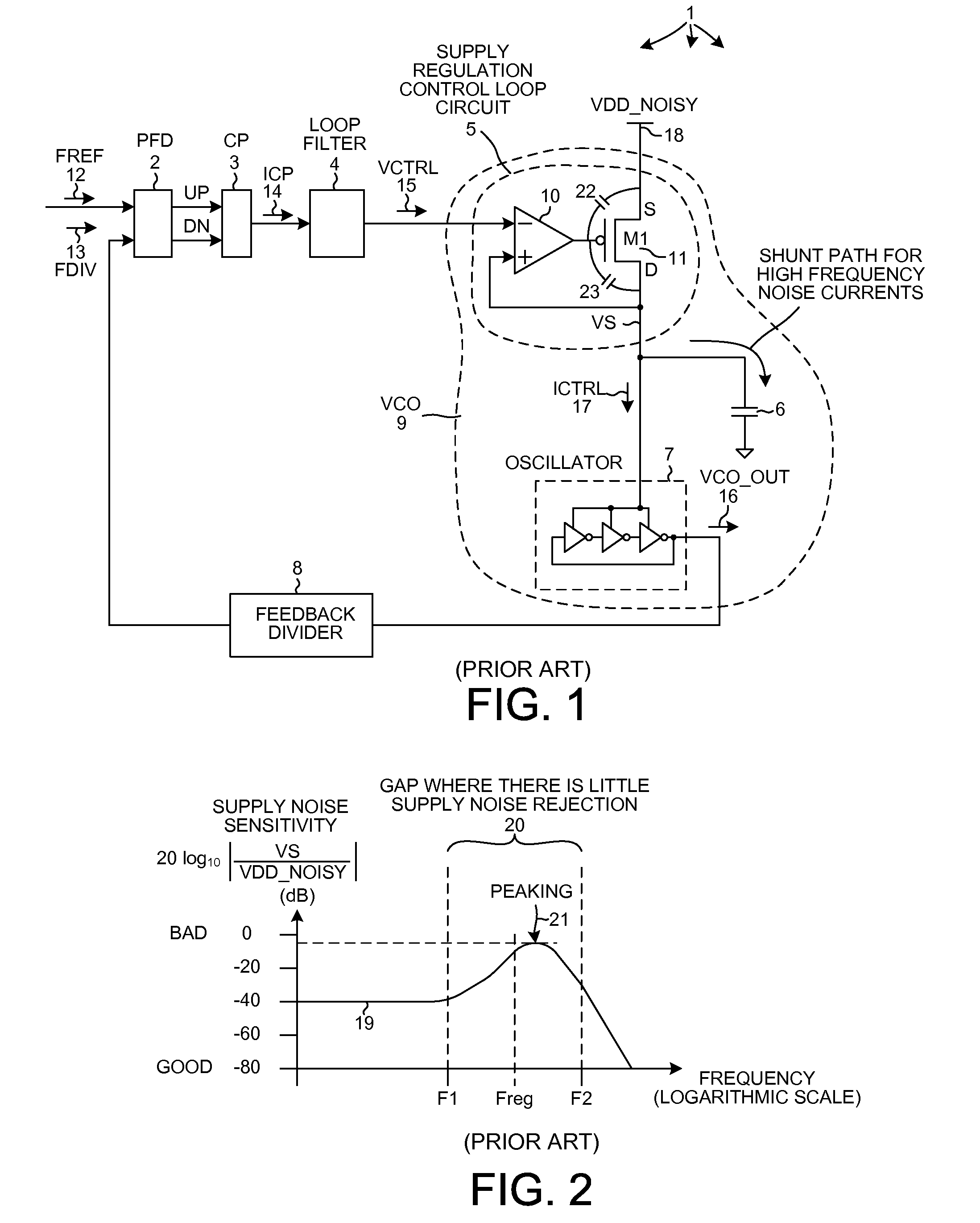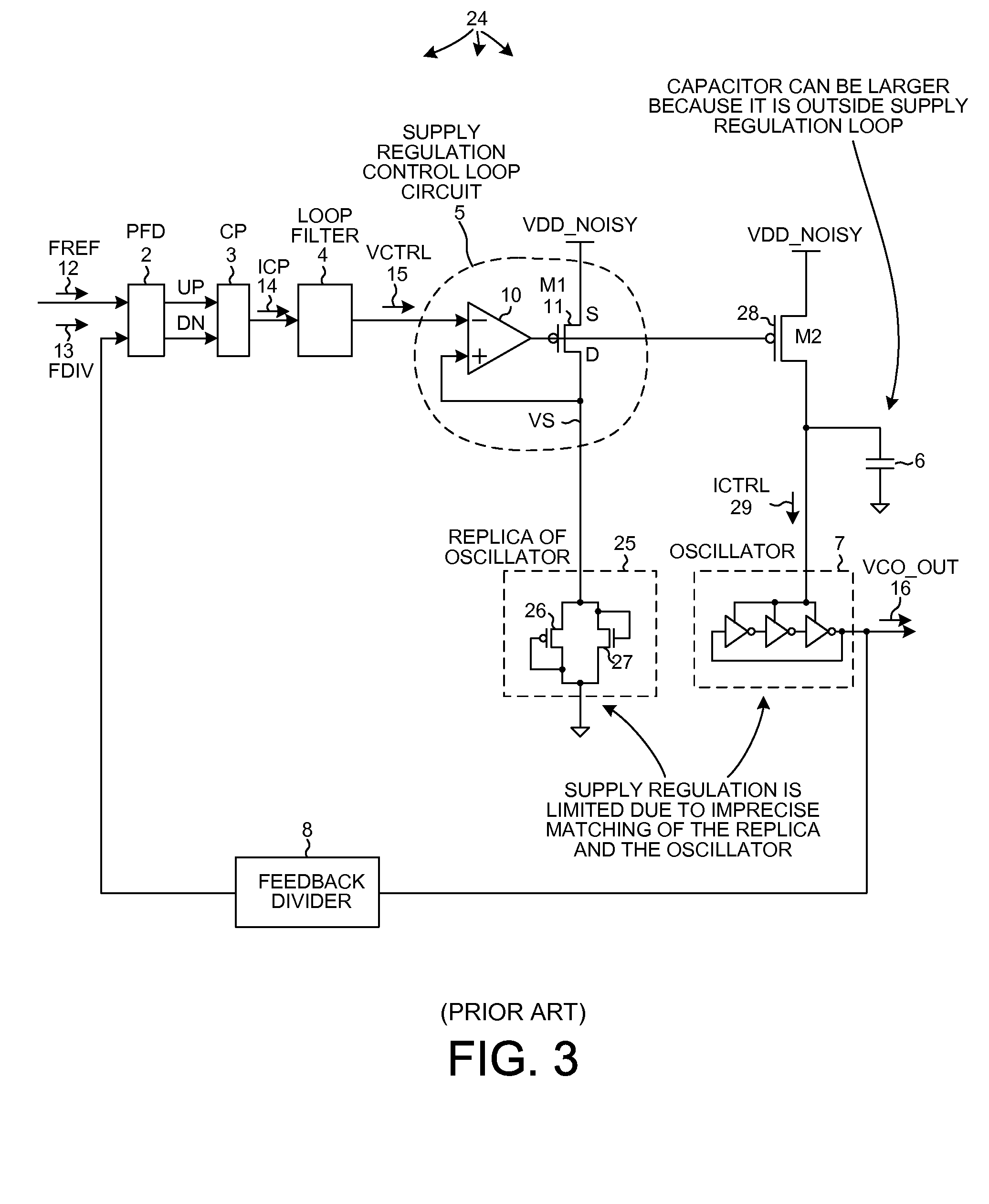Supply-regulated VCO architecture
a supply regulation and vco technology, applied in the field of phaselocked loops (plls), can solve the problems of limiting the stability of the supply regulation loop, the amount of integrated circuit area required, and the noise on the supply voltage vdd_noisy, so as to increase the capacitance of the bypass capacitor without affecting the stability of the overall pll loop, the effect of reducing the noise sensitivity of the supply voltag
- Summary
- Abstract
- Description
- Claims
- Application Information
AI Technical Summary
Benefits of technology
Problems solved by technology
Method used
Image
Examples
Embodiment Construction
[0034]FIG. 6 is a diagram of a Phase-Locked Loop (PLL) 50 involving a supply-regulated VCO 59 in accordance with a first novel aspect. PLL 50 includes a Phase-to-Frequency Detector (PFD) 51, a Charge Pump (CP) 52, a loop filter 53, a supply regulation control loop circuit 54, a bypass capacitor 55, an auxiliary supply current circuit 56, an oscillator 57, and a feedback divider 58. The supply regulation control loop circuit 54, the oscillator 57, and the bypass capacitor 55 together form the supply-regulated VCO 59.
[0035]PFD 51 compares the phase of a reference signal FREF 62 and the phase of a feedback signal FDIV 63 and outputs UP pulses or DN pulses depending on whether the phase of FDIV leads or leads or lags the phase of FREF. Charge pump 52 converts the pulses into a control current signal ICP 64. Control signal ICP 64 is filtered by loop filter 53 and is converted into a control voltage signal VCTRL 65. The VCTRL signal is sometimes referred to as a fine tune signal and is de...
PUM
 Login to View More
Login to View More Abstract
Description
Claims
Application Information
 Login to View More
Login to View More - R&D
- Intellectual Property
- Life Sciences
- Materials
- Tech Scout
- Unparalleled Data Quality
- Higher Quality Content
- 60% Fewer Hallucinations
Browse by: Latest US Patents, China's latest patents, Technical Efficacy Thesaurus, Application Domain, Technology Topic, Popular Technical Reports.
© 2025 PatSnap. All rights reserved.Legal|Privacy policy|Modern Slavery Act Transparency Statement|Sitemap|About US| Contact US: help@patsnap.com



